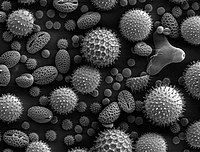
Photo from wikipedia
A surface defect is an important factor that affects product quality. However, due to the large differences in area of different surface defects, and noise on various surfaces, defect detection… Click to show full abstract
A surface defect is an important factor that affects product quality. However, due to the large differences in area of different surface defects, and noise on various surfaces, defect detection is challenging. The convolutional neural network (CNN)-based methods recently developed for defect detection produced higher recognition rates than traditional methods. However, they are typically trained using a supervised learning strategy and large defect sample sets which limits the practical use of these algorithms. This study proposes a novel virtual sample generation algorithm to solve the problem of insufficient defective samples and time-consuming manual annotation in current CNN-based defect detection algorithms. Next, an improved domain-adversarial neural network is proposed, which is trained on virtual and actual datasets to achieve unsupervised learning. Considering the imbalance in actual dataset, algorithm accuracy is improved by changing the proportions of defective and non-defective samples in the virtual sample set, and this strategy is experimentally verified. The performance of the proposed algorithm is compared with several top-performing defect inspection algorithms. The experimental results show that the proposed algorithm exhibits superior performance when compared to other algorithms.
Journal Title: Measurement Science and Technology
Year Published: 2021
Link to full text (if available)
Share on Social Media: Sign Up to like & get
recommendations!